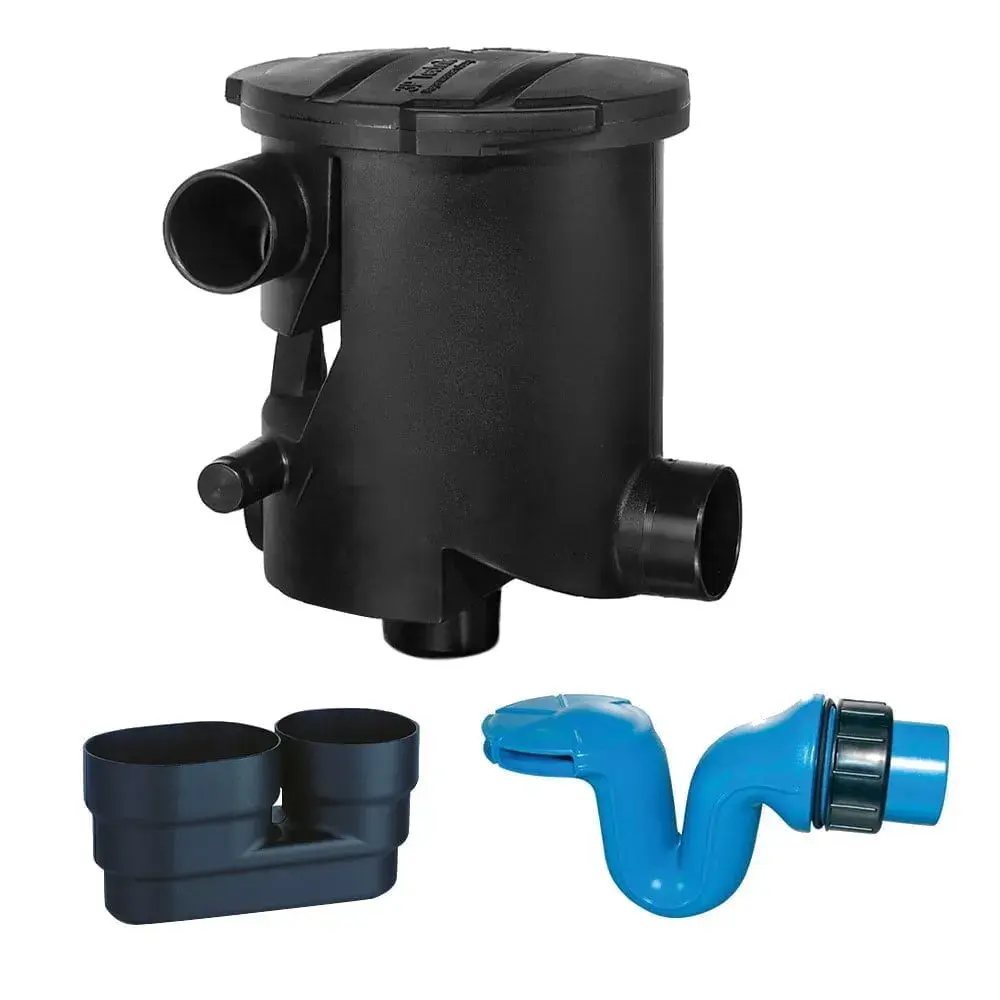
The safety of plastic water tanks is one of the most debated topics in the industry. This short guide gets down to the nuts and bolts of the matter to explain exactly what makes a difference, and what you need to look for.
What Are ‘Contaminated Tanks’?
‘Contaminated water tanks’ are likely contaminated because they contain algae, not because the plastic itself poses a risk. A food-grade or inert plastic tank is a suitable vessel for drinking water in most circumstances.
However, if there is algae in the water or on the surface of the tank, the water is not safe to drink. Tanks can also become contaminated with pathogens such as Legionnaire’s Disease. This pathogen, which causes a potentially deadly form of pneumonia, occurs naturally in rivers, streams, and lakes, and feels equally comfortable in water tanks.
Why Is Algae In Water Tanks A Problem?
Algae is a term that refers to a range of bio-organisms. In technical terms, they are photosynthetic eukaryotic organisms, but to most of us they are slimy green, brown, or red sludge. Excretions from algae are toxic to both humans and animal, and can cause skin rashes, nausea, vomiting, stomach pains, fever, and headaches, organ damage, and neurological damage. Sometimes, breathing in algae spores can be instantly fatal.
Why Does Algae Like Water Tanks?
Algae requires a few basic ingredients to thrive. It needs sunlight to photosynthesise, and it requires relatively still water to mature. Algae thrives in CO2 rich environments, making it particularly prevalent around power plants, ethanol production plants, and similar industrial sites. It also requires heat, which is why the enclosed space of a water tank is so appealing to algae. When sunlight, still water, heat, and CO2 are combined in the right combinations, algae will flourish.
How Can I Stop Algae In My Water Tank?
Removing any component of the algae formula will prevent or limit its growth. For instance, without sunlight, algae cannot photosynthesise. As such, water tanks need to be made of robust, opaque, UV resilient materials such as heavy-duty polyethylene. This powerful barrier deprives algae of the light that it needs to thrive, reducing the risk of toxic blooms inside the tank. Tanks also need to be properly maintained using chemicals such as chlorine to destroy any algae that begins to bloom.
Are There Any Water Treatments Available?
Chlorine is the best chemical for destroying algae. However, it is very important to combine chlorine with the correct water pH. In very alkaline water, chlorine has no effect, and in acidic water it becomes so overpowering that can be harmful to humans and animals. The ideal pH is 6.4, which is the body’s neutral balance. In the comfortable environment of 6.4 pH, chlorine can destroy the organisms that enable algae to thrive.
So… Is Water From A Plastic Tank Safe?
As long as the tank is properly designed, manufactured, and maintained, its water will be safe. At Enduramaxx, we offer an extensive range of high-quality standard plastic tanks and bespoke water tanks. For more information, please get in touch with one of our water safety specialists today.
Image source: Unsplash
Posts By Topics
- Blog (303)
- Chemical Storage Tanks (118)
- Chemical Dosing Tanks (114)
- Chemical Tanks (114)
- Water Tanks (58)
- Rainwater Harvesting Tanks (43)
- Vertical Rainwater Tanks (31)
- Vertical Storage Tanks (31)
- Cone Bottom Tanks (19)
- Conical Cone Tanks (18)
- Rainwater Harvesting (17)
- Water Bowsers (15)
- Horizontal Tanks (14)
- Potable Water Tanks (13)
- Farming (9)
- Case Studies (8)
- Industrial Storage Tanks (7)
- Liquid Fertilser Storage Tanks (6)
- WRAS Approved Potable Tanks (6)
- Wine and Beer Production (6)
- Horizontal Transport Tanks (5)
- Microbrewery (5)
- Rainwater (5)
- Category 5 Break Tanks (4)
- Cider Production (4)
- Mixer Tanks (4)
- Molasses Tanks (4)
- Polyethylene tanks (4)
- Rainwater Filter Kits (4)
- SPECIALIST & BESPOKE TANKS (4)
- Bunded Tanks (3)
- Slimline Tanks (3)
- WRAS Approved (3)
- Clarification Tanks (2)
- Crosslinked Polymer Tanks (XLPE) (2)
- Fertiliser Tanks (2)
- Sump Tanks (2)
- Tank Installation (2)
- Water Butt (2)
- underground water tanks (2)
- ACCESSORIES & FITTINGS (1)
- ATV & UTV SPRAYING UNITS (1)
- Above Ground Effluent Tanks (1)
- Bespoke Tank Frames (1)
- Category 5 Turret (1)
- Caustic Soda Tanks (1)
- Closed Top Bunded Tanks (1)
- Craft beer (1)
- Effluent Tanks (1)
- Enduramaxx (1)
- Ferric Chloride Tanks (1)
- Fire Safety Regulations (1)
- Fire Sprinkler Water Storage Tanks (1)
- Industrial Water Tank (1)
- Open Top Bunded Tanks (1)
- Open Top Cone Tanks (1)
- Open Top Vertical Tanks (1)
- Polyethylene Potable Water Tanks (1)
- Polyvinylidene Fluoride (PVDF) Tanks (1)
- Polyvinylidene Fluoride Tanks (PVDF) (1)
- Pressure Washers (1)
- Pro Series Spot Sprayers (1)
- RWH (1)
- Sodium Hydroxide Storage Tanks (1)
- Sprayer Fill-up Tanks (1)
- Uncategorised (1)
- liquid fertiliser tank (1)
Sign up to the newsletter
enduramaxx.marketing
Related Posts
Best Water Tank for Rain Harvesting - Enduramaxx Ltd
What’s the best type of water tank for rainwater harvesting? Before purchasing a water storage...
Potable or Non-Potable Water Tanks: What’s The Difference?
What’s the difference between potable and non-potable water tanks? If you’re considering purchasing...
What’s The Difference Between Potable And Non-Potable Water Tanks?
If you’re considering purchasing a water tank, whether for domestic or commercial use, there are...
Related Products
From £1,080.00 inc. VAT
£900.00 exc. VAT
From £1,344.00 inc. VAT
£1,120.00 exc. VAT
From £768.00 inc. VAT
£640.00 exc. VAT
£480.00 inc. VAT
£400.00 exc. VAT






